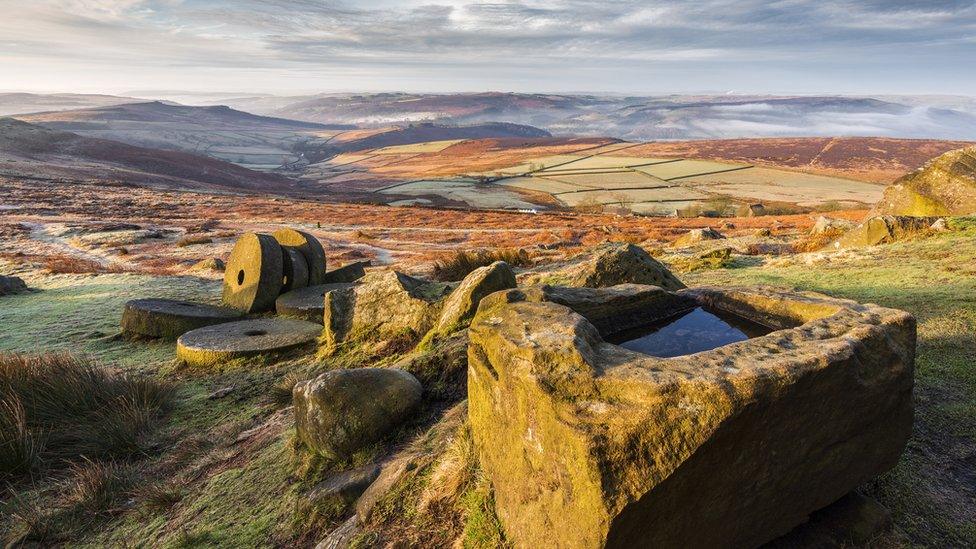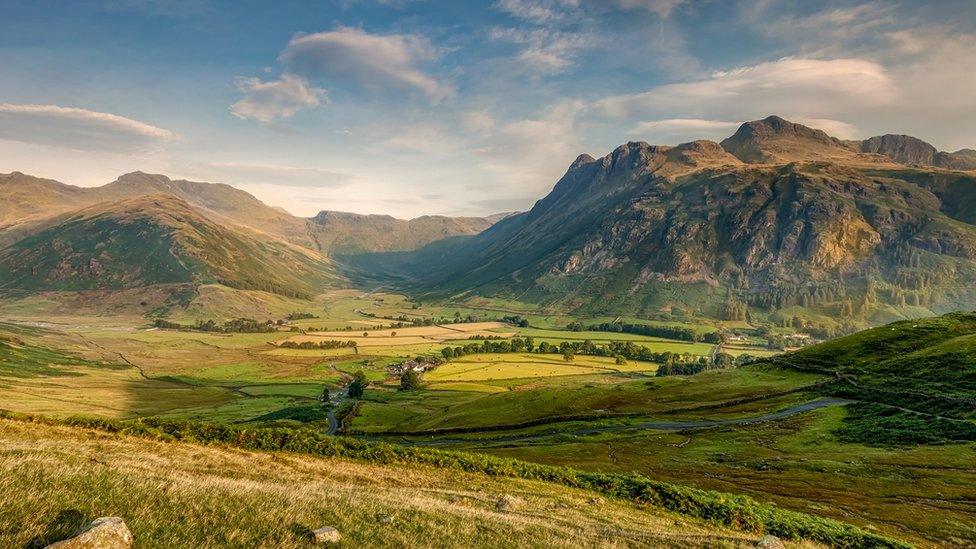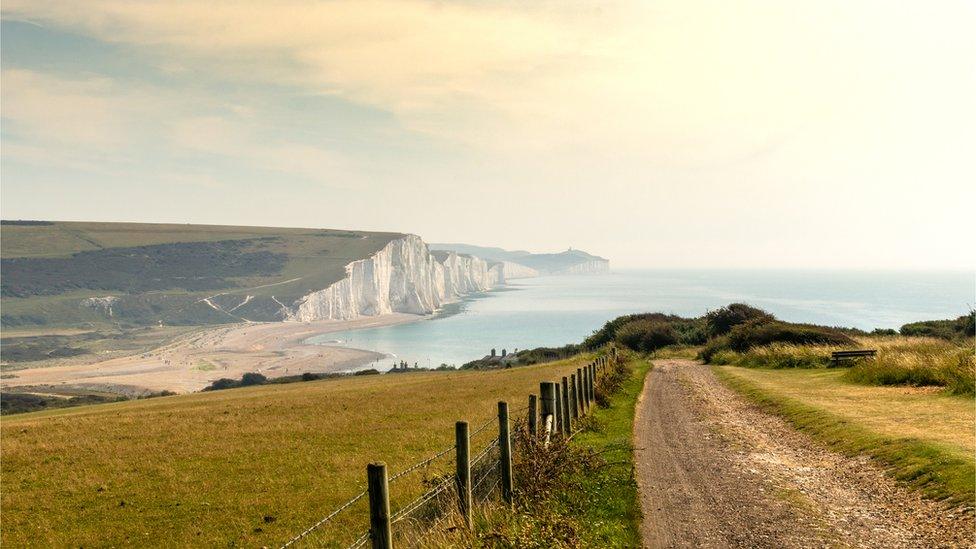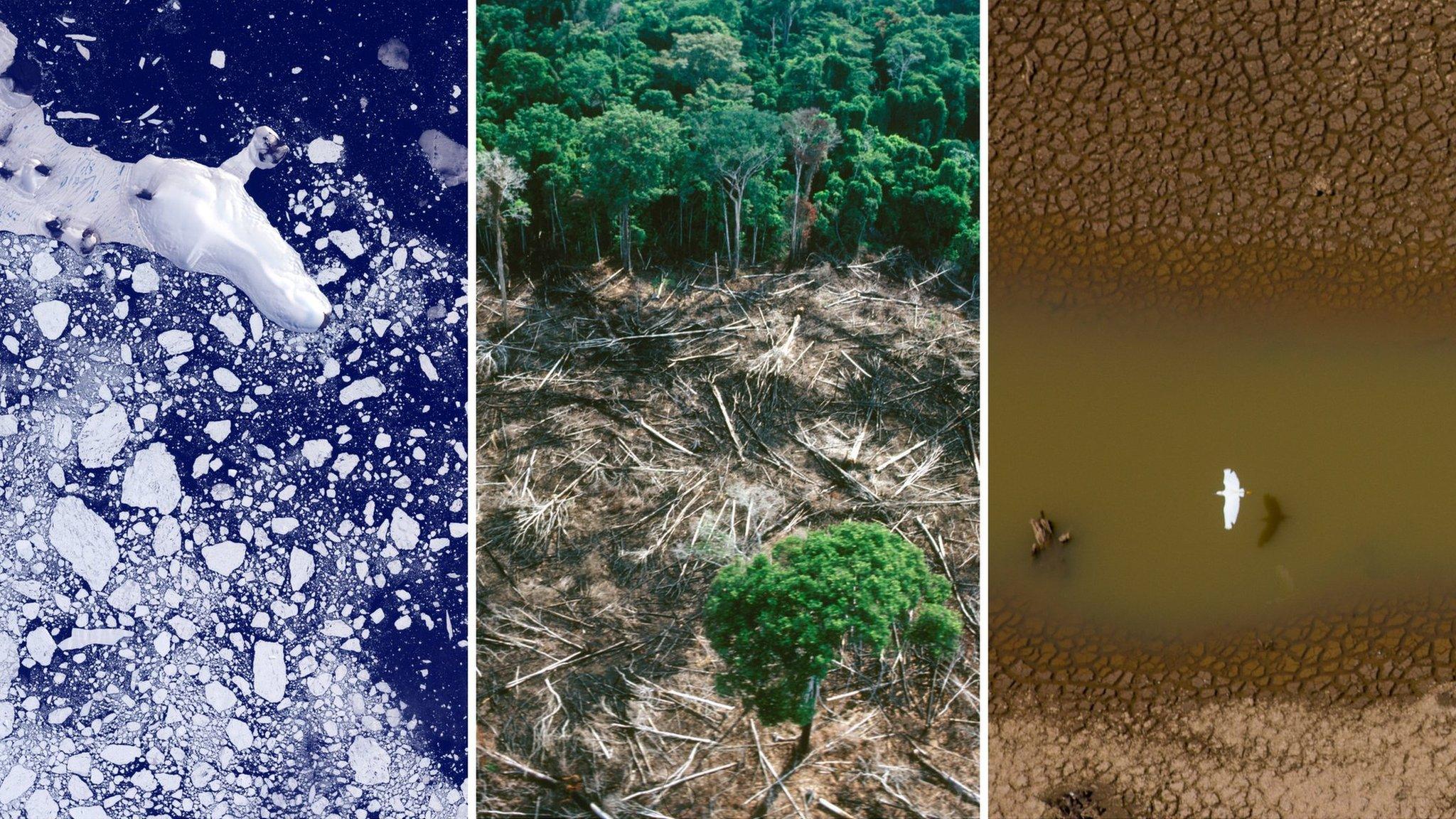Government to unveil 10-point climate change plan
- Published
- comments

The government has been putting together a 10-point plan to invest in the low-carbon economy in an attempt to meet the target of net zero carbon emissions by 2050
The government has announced a £40 million investment into green spaces in England as part of a plan to restore species and combat climate change.
The prime minister Boris Johnson also promised new national parks and greater protections for England's iconic landscapes.
Environmentalists welcomed the investment but said it was only a small amount of what is needed to restore Britain's lost wildlife.
Mr Johnson said the scheme was part of his 10-point plan for combating climate change, which is set to be unveiled this week.

The government is expected to announce plans to ban the sale of new petrol and diesel cars by 2030
energy efficiency and heat for homes and business
offshore wind
the power system
nuclear
carbon capture/storage
hydrogen
innovation funding for net-zero
transport - including a ban on the sale of new petrol and diesel cars from 2030
green financing
natural environment investment
The natural environment funding will go to environmental charities creating or restoring important habitats like peatland and wetland; preventing or cleaning up pollution; creating woodland; and helping people connect with nature.
The government says the cash will fund thousands of jobs in conservation.
The projects could give a home to species that flourished in similar initiatives across the country, including the curlew, nightingale, horseshoe bat, pine marten, red squirrel and wild orchids.
Mr Johnson said: "with the natural world under threat, it's more important than ever that we act now to enhance our natural environment and protect our precious wildlife and biodiversity."
However, scientists, academics and campaigners have urged governments and businesses to be more ambitious.
Environmental activists signed a letter on Friday, saying: "The climate crisis is here now. No matter how quickly we reach zero emissions, the terrible impacts of the climate crisis will not just go away… As such, no matter how quickly it is done, solely cutting emissions is not enough."
New areas of outstanding national beauty

The Lake District is one of England's 10 existing national parks
There are currently 10 national parks in England - including the South Downs, Lake District and Peak District - as well as 34 areas of outstanding natural beauty (AONB). AONB have special protections to conserve and enhance the landscape.
The government says the process for designating new national parks and AONB will start next year.
And 10 long-term "landscape recovery" projects will begin between 2022 and 2024 to restore wilder landscapes.
What do environment groups think?

Speaking about the £40m funding to protect green spaces, Craig Bennett, from the Wildlife Trusts, said: "Of course this is welcome, but it's a tiny amount compared with what's needed.
"The government has pledged to protect 30% of the countryside by 2030, but at the moment only 5% is protected for wildlife. We need £1bn every year for this enormous task."
And research by the Institute for Public Policy Research found the government is investing only 12% of the funds needed to tackle the climate emergency and the growing threat to nature.
Tony Juniper, head of government agency Natural England, said: "I warmly welcome this as part of the delivery of the National Nature Recovery Network - and I'm really pleased to have all this coming from the PM."
However, the government has cut funding for Natural England and Mr Juniper said this has meant the agency has scaled back support on protecting species at risk of extinction.
It's also had to stop management duties for National Nature Reserves and only engages a small number of planning authorities to support landscape and biodiversity activities.
- Published14 September 2020

- Published28 April 2020

- Published20 January 2020

